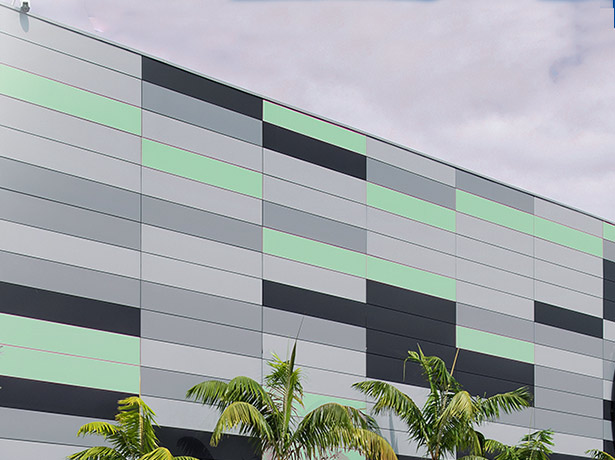Energy efficiency in buildings is key to reducing carbon emissions that contribute to climate change. Buildings account for approximately 40% of total emissions, with building operations responsible for 28% of those total emissions annually. To reduce emissions and help combat climate change, architects, designers and contractors are increasingly using airtight insulated metal panels with maximum thermal resistance, along with other energy saving solutions to deliver buildings that optimize energy efficiency.
Insulated metal panels work in concert with LED lights, solar panels, smart thermostats and a host of other energy-saving solutions to minimize energy loss and improve a building’s energy performance.
An all-in-one system that seals the building enclosure while delivering insulation properties that inhibit energy loss, insulated metal panels deliver unmatched thermal efficiency as well as a full vapor and water barrier. The high R-values of insulated metal panels make it easy for architects and contractors to meet increasingly stringent energy code requirements.
Ryerson University Centre for Urban Innovation is an excellent example of integrating insulated metal panels into building design to increase energy efficiency and prevent energy loss. Green building techniques and energy efficient solutions were key requirements for the design of this project which included new labs and research facilities. To help meet these requirements, 27,000 square feet of Kingspan’s KarrierPanel were integrated into the new buildings. The superior R-value, low thermal bridging and air tightness of these panels improve energy efficiency, helping meet Ryerson’s sustainability goals for this project.
The U.S. Green Building Council’s LEED (Leadership in Energy and Environmental Design) certification provides a framework for advancing the design and construction of high performing green buildings like these. The most current standard, LEED v4.1, offers a rating system for all types of commercial buildings from airports to schools, to data centers to warehouses and distribution centers and more. A project can advance toward achieving LEED certification by improving building energy performance and reducing operational carbon through energy efficiency.
Sustainable design elements including energy-saving solutions helped Nashville International Airport Concourse D achieve LEED® Silver certification. The Concourse D project was certified LEED Silver in December 2020, making it one of the first five airport facilities in the nation to be certified under LEED v4 standards.
Kingspan’s BENCHMARK Designwall 2000 and 4000 panels, which can help improve thermal efficiency, were integrated into the project to work in concert with a number of other energy-saving measures including energy efficient and programmable lighting, electrochromic glass that blocks out excessive sunlight and heat and geothermal cooling – all leading to reduced operational carbon for the life of the building.
The San Francisco International Airport (SFO) Consolidated Administration Campus building was another airport facility certified LEED® Gold. Kingspan’s BENCHMARK Designwall 2000 panels helped accelerate SFO’s mission to become a net zero energy campus and the world’s first net zero energy airport.
Kingspan’s insulated metal panels assisted the architects, Perkins + Will and Mark Cavagnero Associates, pursuing LEED certification by earning points for energy modeling and reducing energy use, energy intensity, recycled content and volatile organic compounds.
Today, the construction industry is making strides toward decarbonizing buildings, reducing energy consumption, fighting climate change and meeting climate goals. Progress is being made in all of these areas through the use of high performing, airtight insulated metal panels that work in concert with a range of other innovative energy efficient solutions to optimize energy efficiency.


